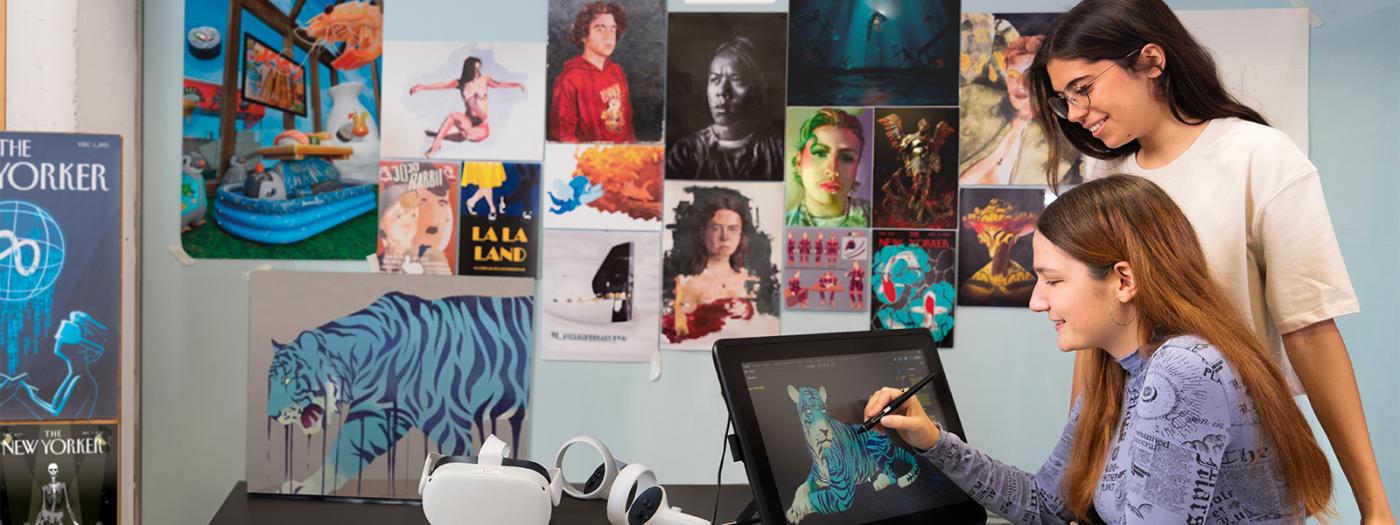Titular Professors
The Learning Outcomes of this subject are:
- RA63 The student knows and applies the developments and animation techniques in his/her projects.
- RA64 The student is able to create 2D animations in digital production.
Topic 0. Grease Pencil- Understanding and technical aspects of the Blender toolTopic 1. Animation: concept and genesis.- Introduction to the discipline of animation, starting from its origins and specifying the theory of 24fps
Topic 2. Timing and Spacing. Schemes to represent them.- The reason for animation. Without time or space, animation does not exist. How to represent them. Types of keys
Topic 3. The 12 principles of animation- We will study and work on the technical conclusions reached by the animators of the 20th century. Thanks to these principles, animations acquire charisma, aesthetics, plasticity, and elegance.
Topic 4. Basic Cycles. References, masses, and weights.- We will start putting into practice the knowledge acquired previously by creating simple animations. The student will learn to analyze references.
Topic 5. Bipedal Cycles. Contacts and Rhythms.- We will study in detail the concepts and techniques necessary for a biped character to walk. We will work with the student the importance of the principles studied in topic 3.
Topic 6. Expression and acting. -How characters can express themselves through gestures. The importance of acting and the golden poses.
It works through different active teaching methodologies and project-based learning. Although there are Master Classes, the demonstrative and practical ones predominate. These are carried out by the students individually with the continuous supervision of the teacher.
At certain moments of the syllabus, learning based on problems and exercises is applied, so that the student has to face situations that make him leave his comfort zone. In this process, the student has to think about solving more complex situations by merging various techniques and applying the theory.
At the beginning of each session, any doubts that resulted from the previous practice or session are resolved.
Afterwards, the theoretical-practical part is discussed so that students have the knowledge and tools necessary to develop the approaches and achieve the new goals
Didactic activities are offered with specific audiovisual material to become familiar with the technical vocabulary and develop their professional growth through practice and experience.
At the beginning of the course, the exercises that make up the continuous assessment of the entire semester and the route to follow to achieve the purpose of the subject are presented.
At the beginning of the most important practices there is a reception of preparation, and at the end, a closing to draw conclusions and learn from mistakes.
Throughout the course, the student receives individual and group feedback to evolve and have the opportunity to rectify, improve their work and have constant growth in their learning.
There will be several partial practices of continuous evaluation corresponding to each of the subjects.
To assess whether the student has reached an adequate degree of the objectives pursued by the subject, different continuous assessment activities are used, with an approximate weekly frequency
Objectives of the continuous evaluation:
-The main objective is to help students to update the subject and get a good working method way that helps them to assimilate the subject, taught progressively, and in obtaining good results academics.
- It also allows to value the work that the student does day by day, without that his note depends only of the practices performed.
-For the teacher, it helps to have more information about the work done by the students and a be er knowledge of them, both academically and personally.
The percentage of the evaluation will be distributed as follows:
EX01: 5%
EX02: 10%
EX03: 10%
EX04: 10%
EX05: 10%
EX06: 20%
EX07: 40%
ATTITUDE: 10%
Of the final grade, 10% is for class a endance and participation.
Deliveries must comply with the established rules and deadlines.
The final grade will be based on the average of the exercises delivered.
The student passes the ordinary call if he has a class a endance of more than 80%, has completed at least 90% of
the different activities and the average grade exceeds 5.
In the event that the student does not pass the ordinary call, he / she will be entitled to an Extraordinary Call in July and will have to deliver those practices with a grade lower than 5.
The categorization of the evaluation activities of the subject is the following:
- Partial Practices: highly significant.
Williams, R., Animator's Survival Kit , Faber and Faber, Lonson 2009
Thomas, F. Johnston O., Illusion of life , Hipéryon, 1997
Bendazzi, G., Cartoons. 100 años de cine de animación , Ocho y Medio, Madrid 2003
Silver S., The Silver Way , Design Studio Press, 2017
Catmull E., Creatividad S.A , PRHGE, Barcelona 2014
